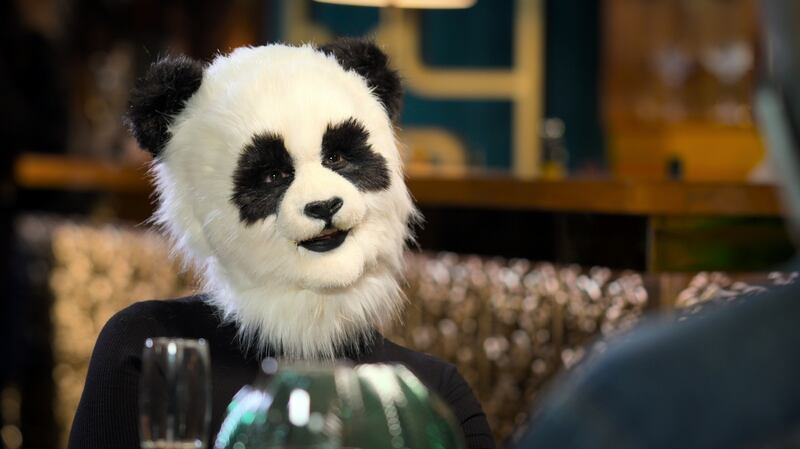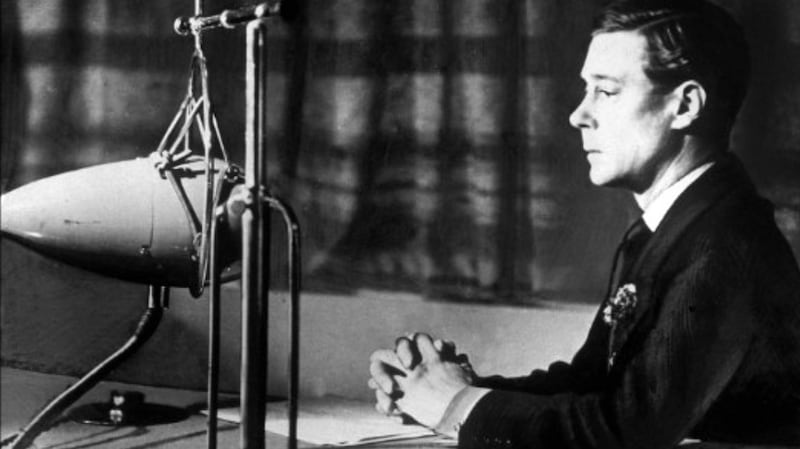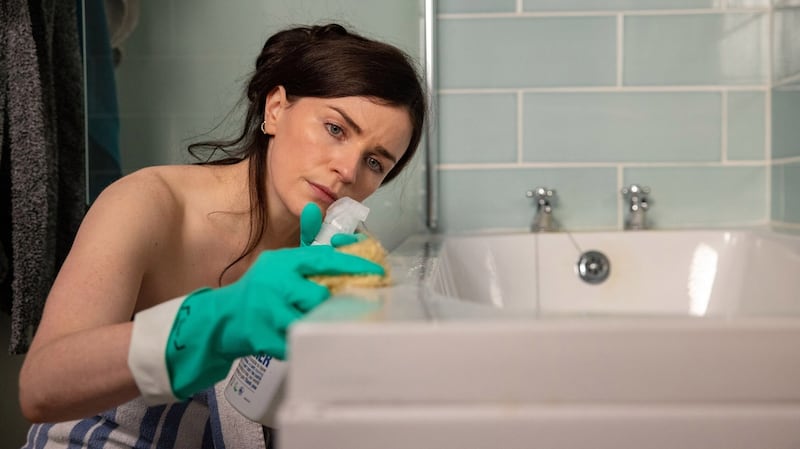It was the late philosopher, economist and urbanist Richard Scarry who first answered man’s oldest question: what if animals had jobs, wore clothes and drove fire engines?
In his influential books on urban planning, Scarry presents us with “Busytown”, a late-capitalistic death cult of productivity in which a population of grotesque human-animal hybrids are caught in an endless cycle of industrial grind, commercial churn and frenzied leisure. The damned denizens of Busytown don’t even have time to say, “Me walk on two legs in mockery of God and imitation of his favoured creature, man!” although it’s clear that, if they spoke, that is exactly what they would say.
Scarry’s beleaguered Everyman, Huckle, an infant cat and proxy for the reader, looks on in gleeful horror at the joyless fate of his motoring neighbours, knowing Busytown to be just another name for hell.
Sexy Beasts' premise is that the daters are so good-looking that their disguises are necessary for a true connection to be made. Without them, any potential dates would be rendered insensible by the hunky beauty. Sure you know yourself
We are all slaves to the world Scarry built, and all towns are now Busytown. It makes sense, I guess, that the Netflix algorithm would be the first to render a live-action version of Scarry’s dream, although it also makes sense that they’d do it as a dating show, because all programming is made up of dating shows now.
In Sexy Beasts (Netflix), aka Richard Scarry's First Dates, fleshy equivalents of Scarry's animal-headed freaks forgo driving ambulances and going on whimsical caravan holidays in order to have a series of confusing dates with other cursed chimera. Sadly, the genetic monstrosities of which Scarry dreamed are not yet possible in contemporary mad science, so the daters on Sexy Beasts are just standard-edition television hunks made to look beastly by special-effects boffins.
The completely relatable premise is that the daters are so radiantly good-looking in the flesh that the beastly disguises are necessary in order for a true connection to be made. Without those disguises, any potential dates would be rendered slackjawed and insensible by the hunky beauty. Sure you know yourself.

Anyway, in the first series, various beavers, mandrills, dolphins, porcupines and buffalo are joined on the dating trail by other beasts that didn't feature in Scarry's original masterwork: demons, pixies, scarecrows and zombies. Before I put all this into the context of the afore-described Scarryverse, I did think Sexy Beasts was a sign that high-concept television production was reflecting a wider societal nervous collapse. I may have even tweeted out the original trailer for this programme with the sentence "We are twitching biological accidents in an infinite void and everything is meaningless" before going to bed for a few days. But now, several episodes in, I'm pleased to say that I'm inured to the horror of it all and attracted to many animals.
In the first episode, Emma, who is made up to look like a red-faced horned demon, goes on dates with Archie, a waffly stone statue, Bennet, a touchy-feely mandrill, and Adam, an easily slighted mouse. In the second, James, a toothy beaver and lab technician, goes on a date with Tamiko, a drone-flying zombie, Amber, an ex-army pixie, and Alexis, a songwriting leopard. They go clay-pigeon shooting, ice-sculpting and roller-coastering, as well as out to restaurants, much like the doomed citizens of Scarry’s Busytown. Sometimes they attempt to kiss one another despite their beastly mandibles, trunks and whiskers. (For some, James’ seductive “Imagine I tried to kiss you with these big beaver teeth” is surely the stuff of romantic fantasy.)
Archie tells us he can guess people’s ages as though this were an employable skill. James tells us that he’s interested in “asses” as though this reveals him to be an aesthete of great sophistication and refinement. I suppose, to be fair, it reveals him to be an assthete.
And then, at the end of each episode, someone says “My sexy beast is...” and chooses one of their fellow freaks as a potential love match. At this point the real appearances of the participants is revealed. Disappointingly, they are almost always human. There are only two ways you can watch this taxonomic nightmare: hating every second of it or liking it so much it disturbs and upsets you.

The Windsors (Monday, RTÉ One) is a CNN production for Americans, narrated by Rosamund Pike in plummy vowels and beginning with a reference to Meghan Markle. Pike stops short of saying, "This is the sort of stuff you idiots like, right?" but if she did the Americans would like it because their postcolonial daddy issues are very different from ours.
Anyway, the programme is all about the Windsors, the pretend rulers of the UK, and it takes us from caveman times in the early 20th century right up to, I hope, Babs Windsor and her sons, Phil and Grant. The first episode is all about the one-time prince of Wales, Edward, as he transforms from a princely "bad boy" to a careless king to the sort of abdicating fascist sympathiser that proves the clan's sound anti-racist credentials to this day.
Edward’s dad, George V, has different hobbies. He has a war with his cousin in Germany to fret about, and his other cousin in Russia is dispatched by revolutionaries, and this looks like it might be a trend. After this experience he’s a little nonplussed by his oldest son’s interests: shaking hands with everybody, American divorcees and fascism.
The programme is filled with press footage from the time and talking heads who are qualified to be there in two distinct ways: 1) because they are actual historians and 2) because they know the family. So we hear from “Artemis Cooper, granddaughter of Prince Edward’s friend Duff Cooper.” And we also hear from “Charlie Metcalf, grandson of Prince Edward’s friend Fruity Metcalf.” Yes, sometimes it’s more painful than usual to remember that we were colonised at the whims of such aristocratic goons.

For revenge we've sent Aisling Bea over to infiltrate Channel 4 and make the British learn to pronounce the name "Áine". The latter belongs to the character she plays in her self-penned funny/sad comedy This Way Up. In series two, Áine is wisecracking her way through her affair with mournful older man Richard (Toby Menzies). Meanwhile her sister Shona (Sharon Horgan) plans her forthcoming marriage and tries to ignore the ramifications of an affair with a colleague. This Way Up is still a beautifully real and funny depiction of emotional fragility and the need for connection. It probably wouldn't be improved if everyone in it had Richard Scarry animal heads, but maybe they should do one episode like that, just to check.












